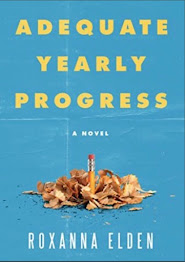2020 has been a total dumpster fire of a year. Plans needed to be shelved. I learned that people whom I considered friends had very different values than I have, making me wonder if we can still be friends. (In some cases yes, in other cases no.) Virtual contact with others became a lifeline to the outside world. And reading helped me get through the year.
Again I say, this book was the perfect book to finish on the final day of this terrible year.
Backman, author of A Man Called Ove, which I loved, and My Grandmother Asked Me To Tell You She's Sorry, which I liked (a little too much fantasy-type writing in this one), really hit it out of the park with Anxious People.
It's the story of a bank robbery gone wrong. Maybe. It's about a hostage situation. Maybe. It's a story about idiots. It's about truth.
It's about marriage, compassion, family relationships, finding meaning in life. All told through the story of a seemingly random group of people thrown together at an open house for an apartment in a small town. There's the wealthy banker, the long-time older married couple who can't stop bickering. There's the newly married couple expecting their first child. There's the elderly woman, the real estate agent, the rabbit.
We meet Nadia, therapist to the wealthy banker. Jim and Jack, the cops called to bring the hostage situation to a safe conclusion, are important characters in the story, too. Every single character in the tale, except for perhaps the hostage negotiator, has a story of his or her own. Each has longings, each has a desire, whether acknowledged or not, to be connected to others. I'd be hard pressed to give a better explanation than this without giving away much of the novel.
As in Backman's other novels that I've read, the characters are quirky. As you might know by now, I love quirky characters. He doesn't come right out and tell the story. He lets the story evolve. It's full of surprises and the reader wondering, "Hey, why didn't I realize that before?" It's important to read Backman novels carefully to be able to put all the pieces together.
I don't know that I'd say that Anxious People was the best book that I read in this terrible year. But it was in the top ten and it was the best book to finish the year with.
Happy New Year!
Happy reading!




































